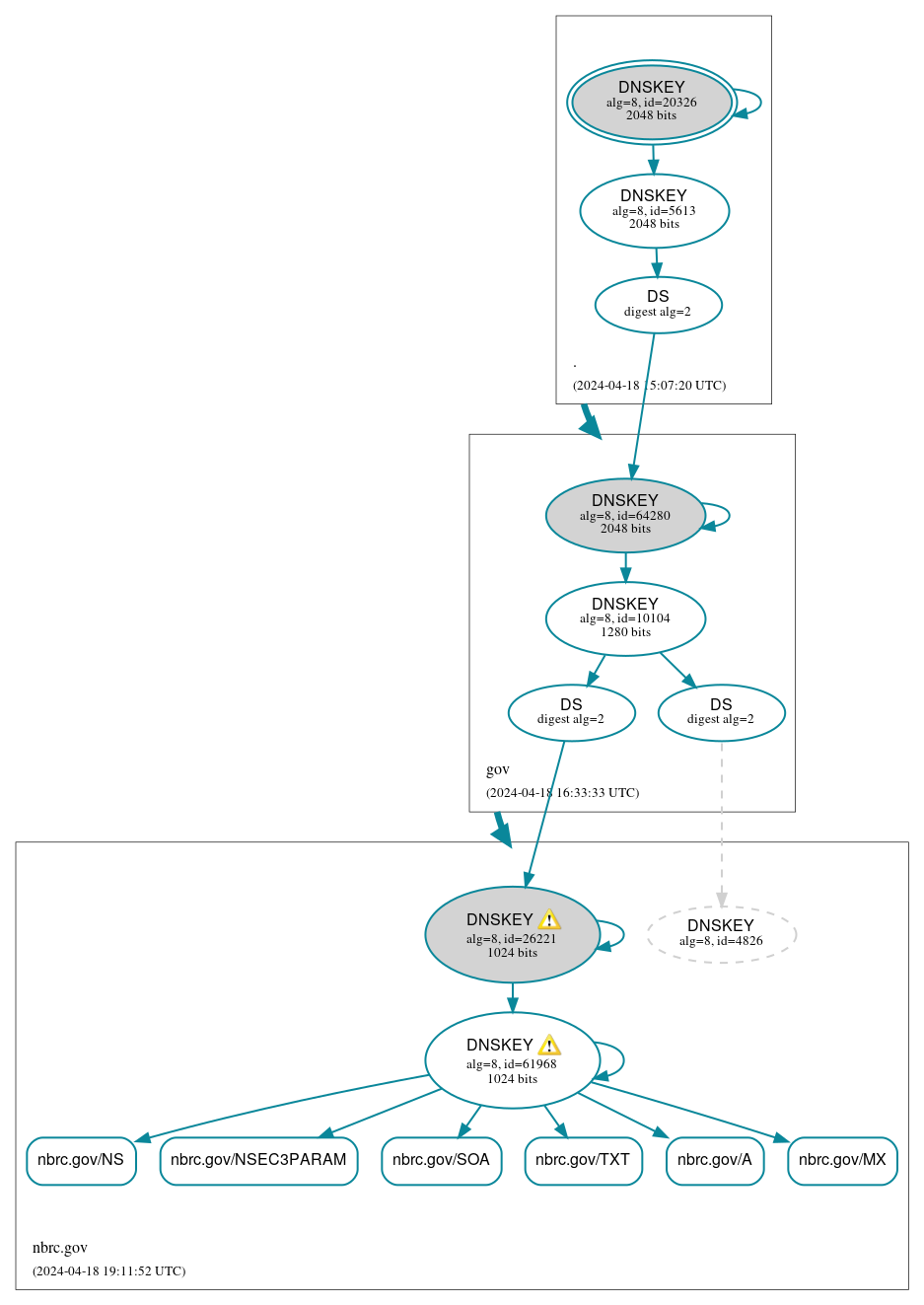nbrc.gov
Updated:
2024-04-18 19:11:52 UTC (219 days ago)
Go to most recent »
Notices
DNSSEC Authentication Chain
 RRset status
RRset status
Secure (6)
- nbrc.gov/A
- nbrc.gov/MX
- nbrc.gov/NS
- nbrc.gov/NSEC3PARAM
- nbrc.gov/SOA
- nbrc.gov/TXT
 DNSKEY/DS/NSEC status
DNSKEY/DS/NSEC status
Secure (9)
- ./DNSKEY (alg 8, id 20326)
- ./DNSKEY (alg 8, id 5613)
- gov/DNSKEY (alg 8, id 10104)
- gov/DNSKEY (alg 8, id 64280)
- gov/DS (alg 8, id 64280)
- nbrc.gov/DNSKEY (alg 8, id 26221)
- nbrc.gov/DNSKEY (alg 8, id 61968)
- nbrc.gov/DS (alg 8, id 26221)
- nbrc.gov/DS (alg 8, id 4826)
Non_existent (1)
- nbrc.gov/DNSKEY (alg 8, id 4826)
 Delegation status
Delegation status
Secure (2)
- . to gov
- gov to nbrc.gov
 Notices
Notices
Errors (3)
- dvx20mlyn8.nbrc.gov/A has errors; select the "Denial of existence" DNSSEC option to see them.
- nbrc.gov/AAAA has errors; select the "Denial of existence" DNSSEC option to see them.
- nbrc.gov/CNAME has errors; select the "Denial of existence" DNSSEC option to see them.
Warnings (3)
- nbrc.gov/DNSKEY (alg 8, id 26221): No response was received until the UDP payload size was decreased, indicating that the server might be attempting to send a payload that exceeds the path maximum transmission unit (PMTU) size. See RFC 6891, Sec. 6.2.6. (13.248.142.184, UDP_-_EDNS0_4096_D_KN)
- nbrc.gov/DNSKEY (alg 8, id 61968): No response was received until the UDP payload size was decreased, indicating that the server might be attempting to send a payload that exceeds the path maximum transmission unit (PMTU) size. See RFC 6891, Sec. 6.2.6. (13.248.142.184, UDP_-_EDNS0_4096_D_KN)
- nbrc.gov/DNSKEY has warnings; select the "Denial of existence" DNSSEC option to see them.





 JavaScript is required to make the graph below interactive.
JavaScript is required to make the graph below interactive.



